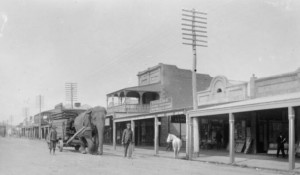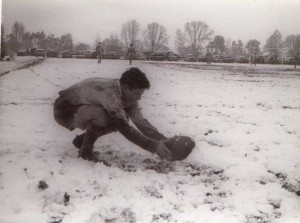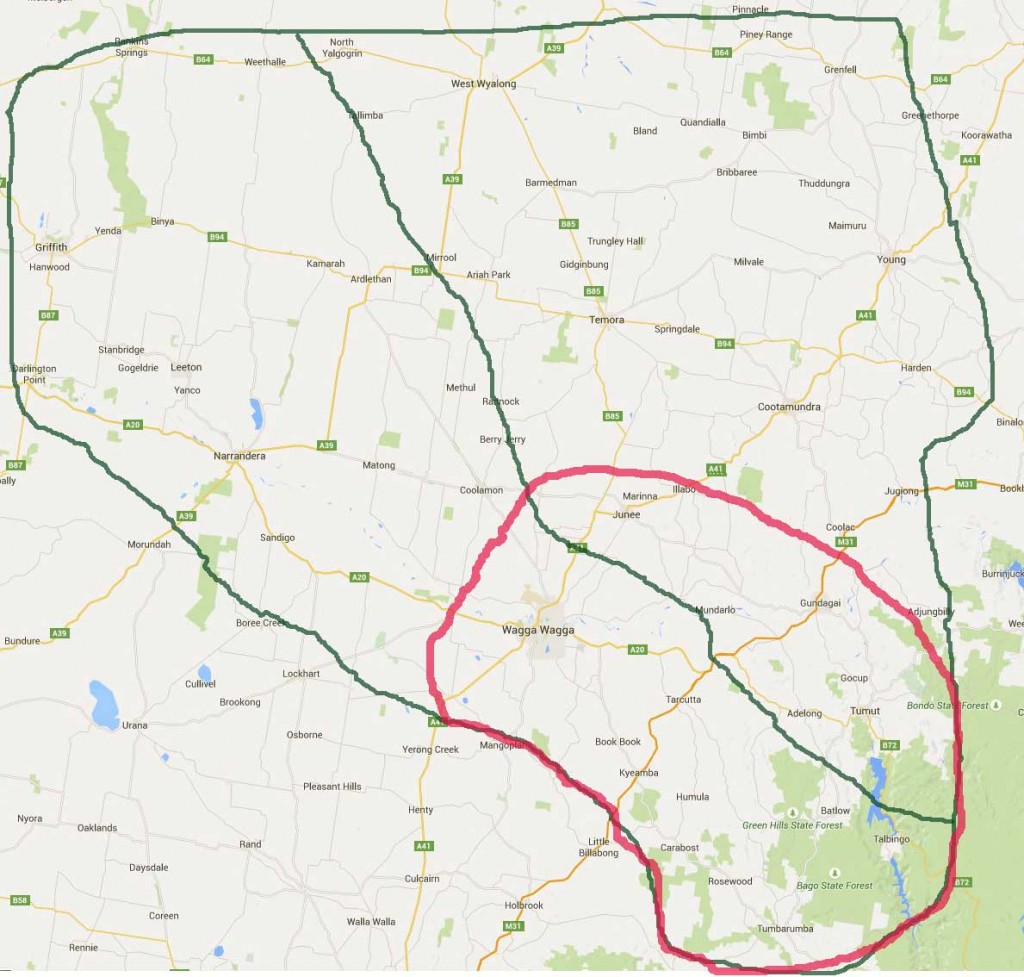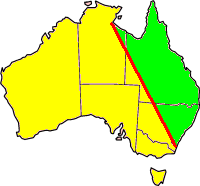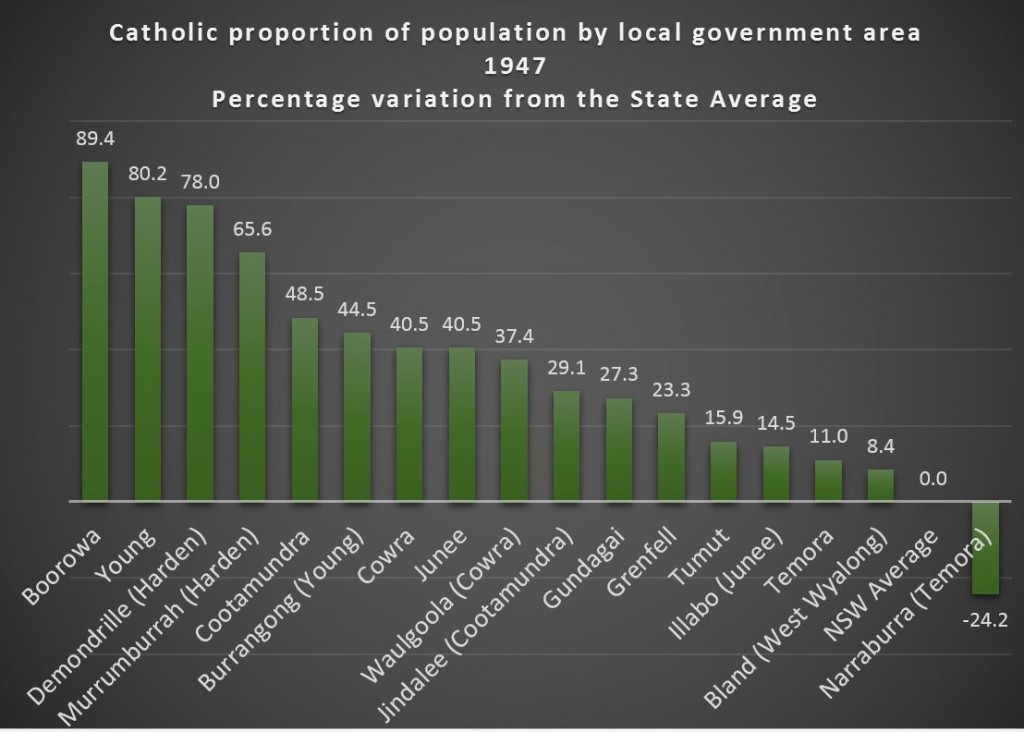Andy Paterson, originally from Batlow, was a teacher at Bundawarrah School, five miles from Temora, from 1934-1939. Below are some reminiscences he penned in a letter to Les Gillard in 1986 upon Temora Rugby League Club preparing for a reunion. The letter is edited. Continue reading
Author Archives: Neil
Gundagai 1921
1921 was the second year of Maher Cup football and its first under Rugby League rules. For the first time Mr E.J. Maher’s trophy left Tumut. It was the year of Gundagai.
The transition to League was simple. By the time the Tumut and Gundagai area clubs met to decide whether to stay with Union or move to the more attractive code, nearby Junee, Harden and Cootamundra and just about every other town in the southwest, had already moved. The decision was made without rancour or acrimony.
But there was much more than football on the minds of Gundagai people…. Continue reading
Old Films of the Maher Cup, People & Life in & around Harden-Murrumburrah
 These two 20 minute (approx) videos, linked below and now placed on You Tube, are from a found film reel that was given to Wal Galvin of Cootamundra on DVD. The creator is unknown. It is uncaptioned and silent. Two things are clear from watching. They were amateur films shot in the early 1950s. The main town featured is Harden-Murrumburrah, with some film also from Young and Goulburn as well as from a farm.
These two 20 minute (approx) videos, linked below and now placed on You Tube, are from a found film reel that was given to Wal Galvin of Cootamundra on DVD. The creator is unknown. It is uncaptioned and silent. Two things are clear from watching. They were amateur films shot in the early 1950s. The main town featured is Harden-Murrumburrah, with some film also from Young and Goulburn as well as from a farm.
It would be wonderful to fill in the gaps. Who are the people? What Rugby League matches are being played and where? (Roberts Park, Murrumburrah?) What about the other sports the buildings and towns? So much to discover. Please leave some comments if you know. Continue reading
A Show in the Snow : Tumut vs Grenfell 7 August 1965
After some forty-five years, interest in the Maher Cup was beginning to wane by 1965, but at Tumut on the 7th of August a deep covering of snow didn’t deter some 500 diehards from driving out to the Racecourse ground for another gruelling encounter. Continue reading
The Maher Cup Originals: Tumut and Gundagai in 1920
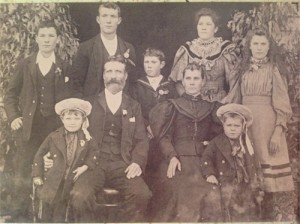
The family of William Daniel Patrick O’Brien about 1897. Tom O’Brien went to war and returned to captain the first Tumut Maher Cup team. Here he is with his dad’s arm around him. Younger brother Assal and Orlando (top left) both died in the War. [Source: Ancestry.com]
Below are the team lists with brief biographical information. Further down is the analysis which you can jump to here.
The Murrumbidgee Rugby League & the End of the Maher Cup
This article is largely based on Jack Weeks’ book The breakaway of the Murrumbidgee Rugby League : the forerunner and the aftermath 1960 – 1972.
In 1965 the logic of the Murrumbidgee Rugby League (MRL) breakaway was simply clear from the Riverina’s geography.
Drawing the Barassi (Jim Keys) Line
Academic Ian Turner in 1978 invented the term Barassi Line to identify the border separating where men and boys played Australian Rules and where they preferred Rugby League. As you can see in the map it is all a bit too linear to be real. The only area along the line containing any significant population is the Riverina. So perhaps we can fine tune that line.
I must say I don’t like the line being called after Ron Barassi – better to name it after a footballer who lived on the line and played Australian Rules on Saturday and Rugby League on Sunday – such as Eric Kuhn originally from Weethalle or Jim Keys from Gibsonvale. So I’m calling my line the Jim Keys line. Continue reading
A Brief History of the Maher Cup Clubs in Graphs
Graphically representing the number of matches played by each club helps illustrate the highs and lows of their footballing journeys over the 52 years of the Maher Cup history, and provides the basis of a brief club history. Failure to capture the Cup meant twiddling thumbs and fretting on the outcome of the next draw.
Cootamundra (224 matches). Playing 62 games more than any other team, Coota started with a bang in 1922 winning in its first game under Phil Regan – the first paid-player coach in the bush. They didn’t let up. Regan’s 1920s blue and whites, featuring players such as Eric Weissel, Jack Kingston, Bill Lesberg and Gordon Hinton utterly dominated their opponents. With a little help they even took on England. During the Depression years, after Regan departed, it all fell apart for a while. 1935 saw the purchase of five paid players, an embarrassing loss to Tumut, and the imports instantly sacked. Coota rose to the top again in 1939 with a team composed mainly of local ex-De La Salle boys. After the war Herb Narvo (1947) and Johnny Graves (1954) led teams of extraordinary quality. Reverting to mainly local players the town continued to be consistently competitive into the 1960s. Continue reading
Audio
The idea of these short sound files of old newspaper articles is to prompt readers to share them with parents and grandparents who will remember the Maher Cup days. The objective is to prompt memory, start discussions and re-engage with this history. If you want me to record any particular reports of matches that a relative may have played in I’m most happy to.
Junee Footballers Caught in Floodwaters
Adventurous Trip in Futile Effort to Reach Cowra [for a Sunday match]. 4:34 mins.
Junee Southern Cross, reproduced in the Gundagai Independent, 27 July, 1950
Catholics, Labour and Rugby League
The 20 most common surnames in NSW are ranked thus: Smith, Jones, Williams, Brown, Wilson, Taylor, Nguyen, Johnson, Martin, White, Anderson, Walker, Thompson, Lee, Harris, Ryan, Robinson, Kelly & King.
The most common surnames of the more than 3,200 Maher Cup players are: Smith, Kelly, Brown, Ryan, Thompson, Miller, Hall, Williams, Broad, Lawrence, Turner, Anderson, Crowe, Edwards, Walsh, Murphy, Harris, Davis, Lemon, McDonald, Murray & O’Brien.
Two things stand out. First there are ‘Maher Cup families’ who have produced footballers down the generations, such as the Broads of West Wyalong, Lawrences of Barmedman and Turners of Junee. Second is that Irish names feature much more prominently in Maher Cup country than you would expect: Kelly, Ryan, Crowe, Walsh, Murphy and O’Brien.
Looking at population figures (from 1947 as mid-point in Maher Cup history) the graph below shows how the Catholic population varied from the NSW average of 22.7%.
